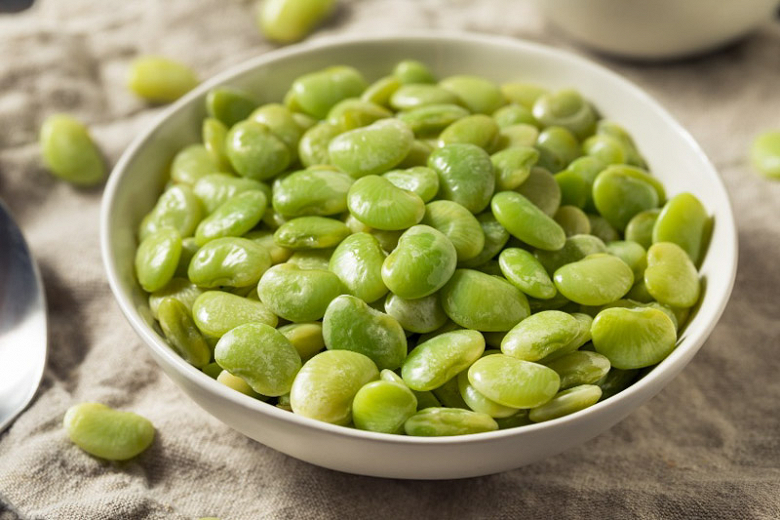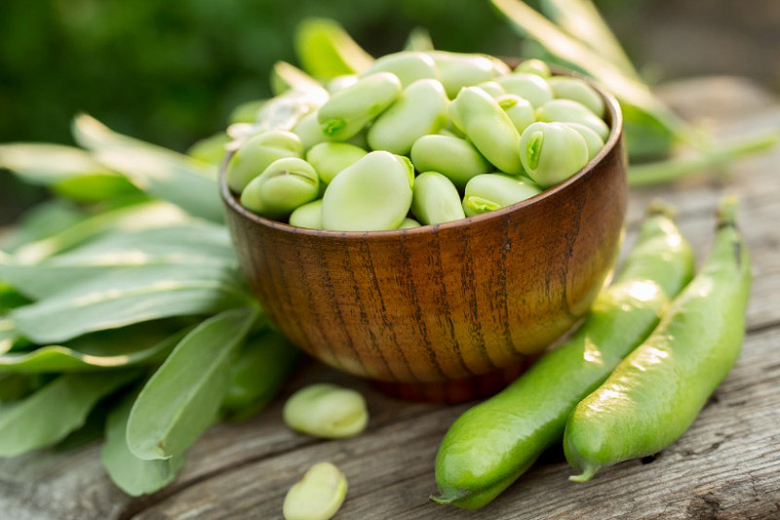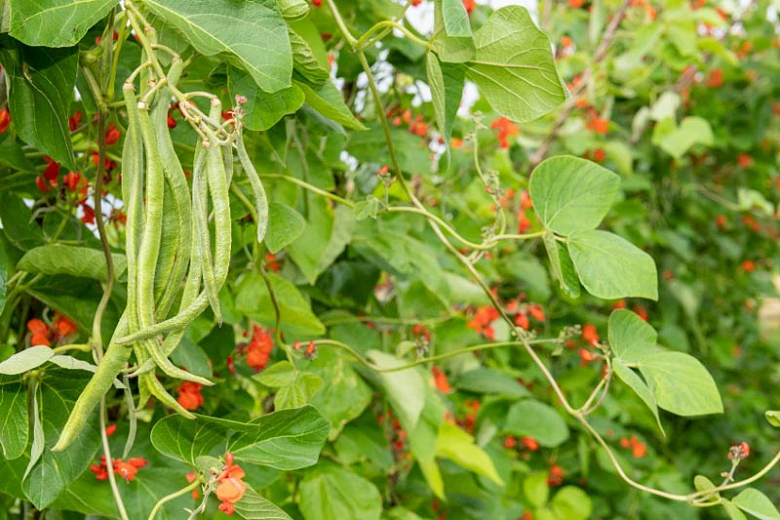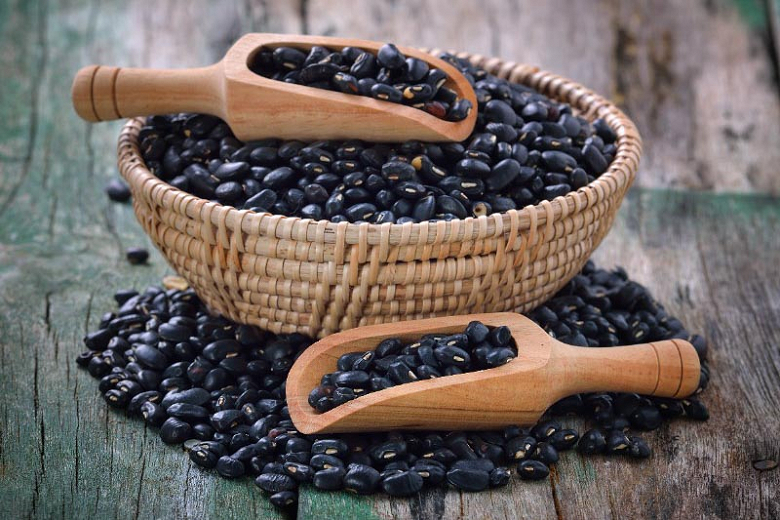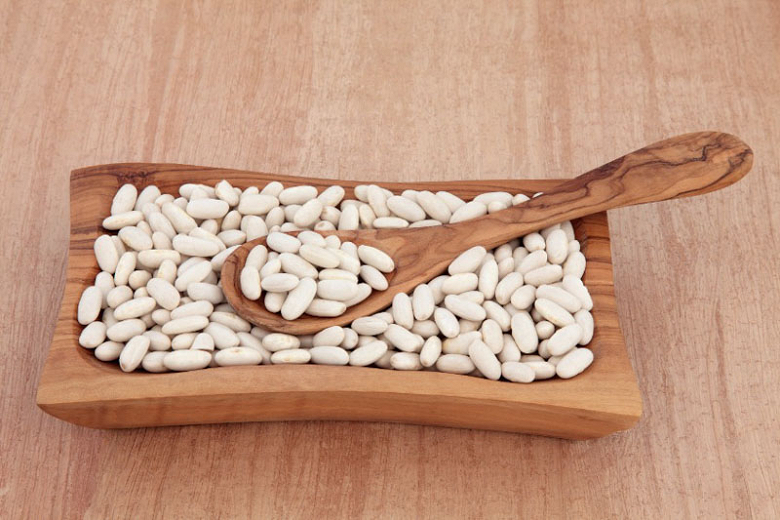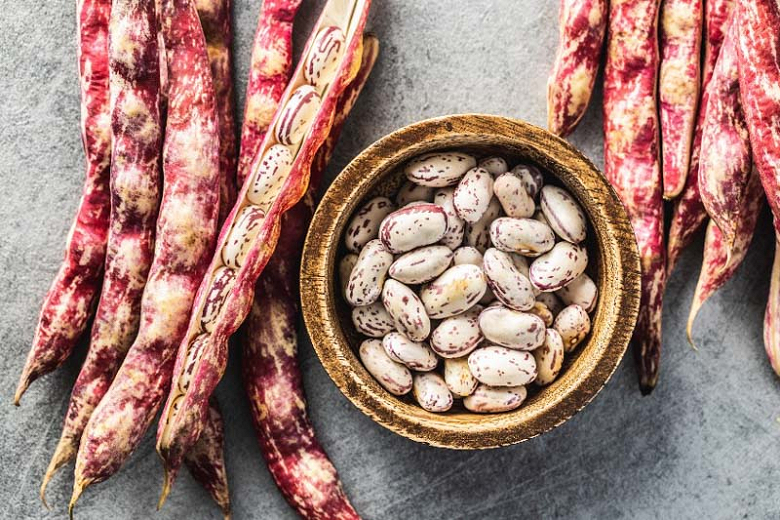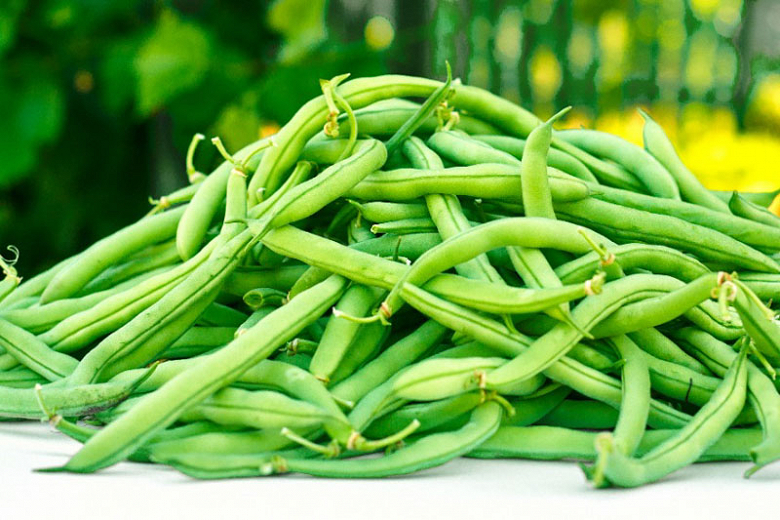Phaseolus lunatus – Lima Beans
Native to Peru, Lima beans (Phaseolus lunatus), sometimes called Butter beans, have been prized for centuries for their energy and nutrients. While different from the common beans, Lima beans have a similar growth habit.
Native to Peru, Lima beans (Phaseolus lunatus), sometimes called Butter beans, have been prized for centuries for their energy and nutrients. Lima bean plants feature trailing green vines and trifoliate leaves with oval leaflets like other bean varieties. Loose clusters of white or yellow flowers are followed by curved pods that are flatter than those of common green beans. While different from the common beans, Lima beans have a similar growth habit.
What are Lima Beans?
- Lima beans belong to the plant family, Fabaceae, also known as the legume, pea, or bean family, which includes lentils, chickpeas, peas, and peanuts.
- Although often considered a vegetable, Lima beans are botanically classified as a fruit, as they grow from a flowering plant and contain seeds.
- Lima beans have been grown in Peru over 9,000 years. Since then, they have gained popularity worldwide.
- Lima beans have flattened semi-circle pods containing two to three flat, oval-shaped, pale green or cream-colored beans.
- Large Lima beans are also called butter beans because of their rich, buttery taste, while smaller Lima beans are sometimes called baby limas.
- Fresh Lima shelling beans are available in summer and fall. Lima beans are also sold as dried, frozen, and canned.
- Lima beans can be grown at home in both bush and pole varieties.
- Beans fix nitrogen and add nutrients that improve the soil, benefitting the plants that are growing beside them. Beans are great for heavy nitrogen users.
Health Benefits of Lima Beans
- While Lima beans make a flavorful addition to various dishes, they can also provide health benefits.
- Lima beans are low in calories but are packed with high-quality proteins, fiber, and other nutrients, making them a superfood.
- Proteins benefit a healthy immune system and help maintain healthy bones, hairs, organs, and muscles.
- Fiber may help lower harmful cholesterol levels and improve your heart health. Fiber also helps regulate the digestive tract and keep your digestive system healthy.
- They are rich in manganese which acts as an antioxidant and plays a vital role in metabolism.
- Lima beans contain copper, which supports immune health and promotes brain function.
- Lima beans are also a source of potassium to balance fluid levels and calcium, which is essential for maintaining strong, healthy bones.
- One cup of Lima beans contains about 25% of your daily recommended iron. Iron can help prevent anemia.
- Lima beans also contain phosphorus, magnesium, and sodium.
- Legumes such as Lima beans have a low-glycemic index, making them an excellent choice for people with diabetes.
- Nutrition Facts (per 100 grams): 115 calories, 21 grams carbs, 7.8 grams protein, 0.4 grams fat, 7 grams fiber.
Cooking with Lima Beans
- These gluten-free beans are key ingredients in various dishes and are particularly popular in the American South.
- Lima beans develop a dense and meaty texture and a sweet almond aftertaste when cooked.
- Baby Lima beans are a great addition to stir-fries and succotash (a dish made with corn, okra, tomatoes, and other vegetables).
- Mature lima beans (butter beans) are as versatile as dry beans and can be used for stews, soups, casseroles, cassoulet, pasta dishes, and many more.
- Lima beans are an excellent substitute for Red kidney beans, Fava beans, Great Northern beans, Black-eyed peas, Edamame, and Cannellini beans.
- Dried Lima beans should be soaked in the refrigerator for at least 8 hours. This will contribute to eliminate some sugar, make the beans easier to digest and reduce the cooking time.
- To ensure that your Lima beans are safe to eat, always soak them in advance. Remember to give them a thorough rinse if you are using canned Lima beans.
- Lima beans are toxic when raw, so they must be cooked before eating.
Growing Lima Beans
- Lima beans grow up to 2-15 ft. tall (60-450 cm) and 2-3 ft. wide (60-90 cm), depending on the variety.
- Lima beans perform best in fertile, acidic to neutral (pH ranging from 6.0 to 6.8), moist, well-drained soils in full sun (at least 6-8 hours of direct sunlight per day) in a sheltered location.
- If your soil lacks nutrients, add well-rotted organic matter or compost before planting.
- Keep the soil evenly moist but not soggy. Bean plants do require consistent and even moisture once they have formed flowers.
- Depending on the variety, bush beans take 60-80 days to harvest after planting. Pole beans take 75-90 days to harvest after planting.
- Lima beans are a warm-weather crop and grow best between 70-80°F (21-27°C).
- Lima beans are sensitive to frost and suffer damage from even a light frost.
- Sow seeds outdoors anytime after the last spring frost date after the soil has warmed. At soil temperatures below 65°F (18°C), most bean cultivars germinate poorly and are more susceptible to pests and root rot.
- Do not start Lima bean seeds indoors because their roots are fragile and may not survive transplanting.
- Soak seed in compost tea for 25 minutes before planting to help prevent disease and speed germination.
- Bush beans: sow 1 inch deep (2.5 cm) and 2-4 inches apart (5-10 cm) in rows 24-36 inches apart (60-90 cm).
- Pole beans: set up trellises or other supports before planting, then sow 1 inch deep (2.5 cm) around your supports.
- Plant additional seeds every 2 weeks for a continuous harvest.
- Beans are soil builders. They rarely need any fertilizer during the growing season.
- Mulch to retain moisture, keep the soil cool, and control weeds.
- Rotate crops: Prevent problems by not planting beans in the same location more often than every 3 years.
- Compost plants after harvest. Cut them at the root. The nutrient-rich roots can be tilled back into the soil.
- Lima beans are susceptible to a few pests. Keep an eye out for aphids, blackflies, cucumber beetles, cutworms, grasshoppers, Japanese beetles, Mexican bean beetle, root-knot nematodes, slugs, snails, spider mites, Stinkbugs, thrips, whiteflies, and wireworms.
- Lima beans are susceptible to diseases, including anthracnose, bean mosaic virus, powdery mildew, bean root rot, bean rust, and white mold.
Harvesting and Storing Lima Beans
- Lima beans can be harvested early (baby Lima beans), or as fully mature dry beans (butter beans).
- There are two harvesting stages: the shelling stage and the dry stage.
- Shelling stage: Lima beans are ready for harvest when the pod changes color and the beans are plump – but before the pod and seeds have dried.
- Dry stage: leave the pods on the vine until they are dry and brittle and the beans inside are hard.
- Hold the vine when pulling off the bean pods to prevent damaging the vine.
- Keep fresh Lima beans in the refrigerator for a couple of days.
- Dried beans can be stored in an air-tight container in a dry, cool spot for 5-10 years.
Best and Worst Companion Plants for Lima Beans
- Beans are great for heavy nitrogen users. They add nutrients and improve the soil, benefitting the plants that are growing beside them.
- A good example of companion planting is The Three Sisters Garden. Practiced by Native Americans thousands of years ago, this garden includes corn, beans, and squash. The tall corn provides shade for the lower squash but also stops the squash vine borer beetle. Corn also provides support for the bean plants to climb up. The beans enrich the soil with nutrients for both corn and squash. And the large leaves of the squash vines create a protective mulch that helps retain moisture while suppressing weeds. Another added benefit is the prickly vines of the squash deter the raccoons from stripping the corncobs.
- Mexican bean beetles can reduce the production of green beans if allowed to multiply. Their damage is reduced spectacularly when beans are interplanted with other vegetables and herbs.
- Lima beans can be grown at home in both bush and pole varieties.
Best and Worst Companion Plants for Bush Beans
Best and Worst Companion Plants for Pole Beans
Requirements
| Hardiness | 2 – 11 |
|---|---|
| Climate Zones | 1, 1A, 1B, 2, 2A, 2B, 3, 3A, 3B, 4, 5, 6, 7, 8, 9, 10, 11, 12, 13, 14, 15, 16, 17, 18, 19, 20, 21, 22, 23, 24, A1, A2, A3, H1, H2 |
| Plant Type | Annuals, Fruit |
| Plant Family | Phaseolus – Beans |
| Exposure | Full Sun |
| Season of Interest | Summer (Early,Mid,Late)Fall |
| Height | 2' – 12' (60cm – 3.6m) |
| Spread | 2' – 3' (60cm – 90cm) |
| Water Needs | Average |
| Maintenance | Average |
| Soil Type | Chalk, Clay, Loam, Sand |
| Soil pH | Acid, Alkaline, Neutral |
| Soil Drainage | Moist but Well-Drained |
